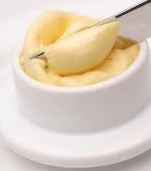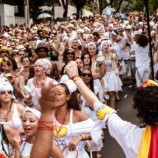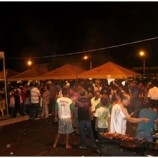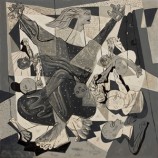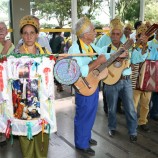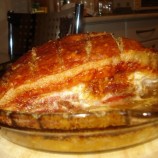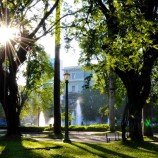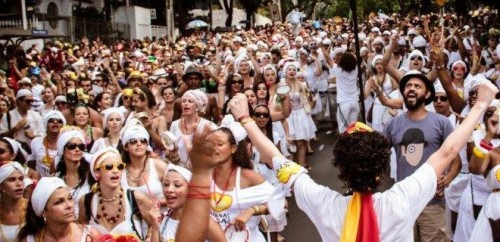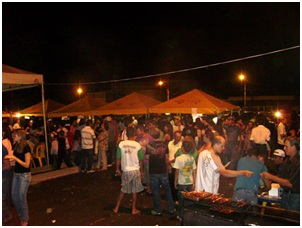The year was 1955 and I was fourteen years old when I was transferred from the Jussara Gas Station, located on the far end of Pompéu, where I had learned a little bit of everything, to work at the butter factory owned by the same firm, Thomaz Campos & Cia Ltda.
At the factory I was a subordinate directly under Hipólito, who was son of Thomaz, the company chairman. Being that he was already an acquaintance of mine, I called him Hipoltinho. But the one who gave me orders, trained me and attributed tasks to me was Zezé do Bahia, Hipólito’s first cousin. Working together in the accounting office with Hipólito was my gorgeous teacher, Inês Santos, who we called Neném.
The first thing that I learned was how to receive the milk cream, the main raw material, delivered directly by the farmers, brought in by the factory’s trucks or supplied by surrounding towns. For me it was startling at first to see all that already fermented cream going to be transformed into quality butter for exportation. It was sold at the factory doorstop retail by the pound, wrapped in wax paper, or in some cases in nice metallic tins, more as a nice touch for friends than anything else.
It’s worth noting that we had suppliers of all shapes and sizes. Some well-turned-out gentlemen would even return the factory’s own 10, 20 or 50 liter cans, well washed and clean. After we started printing the bas-relief logo over the blue paint around the “belly” of every can, some folks would even retouch the painting and always made a point of waiting for me to wash and return the same cans to them on the spot. Normally I would just grab any old can previously cleaned and dry it to keep things moving.
There were for example, José Menezes or Zé do Piduca, José da Veiga Reis and more than a half dozen other farmers to whom we really took pleasure in attending. They delivered a cream that was flawless in color and, I dare say, almost fresh and yummy. We would receive the cream, weigh and examine it in a laboratory to calculate the ratio percentage of water to fat, and then provide a credit voucher with the calculated value. One farmer or another, not more than once a year, would ask for us to centrifuge their cream at the time of delivery to see if the analysis was correct. In this process, the water is withdrawn and the cream is purified. We always got identical results, ho glory!
From there the cream was dumped into a stainless steel tank with two filters to separate any impurities coming from the farms, and then to a similar tank with increased capacity connected directly to the centrifuges, which we called whisks. There were three large factory mixers that worked under full load at the time of harvest and two smaller ones for use in off season and for carrying out tests as requested by the suppliers.
At the far end of the factory was the boiler which supplied steam for washing the large cans and tanks, equipment and even the floors. The process of removing the fat from the cans with steam was done with such speed that I am impressed by it to this day: there was an instrument that shot a jet steam of hot vapor up through “mouths” the size of the smallest can in diameter. A simple handling of the lever released the jet steam and in seconds the can was defatted. Next they were washed with liquid abrasive cleaners, soap and then rinsed. A high powered diesel engine coupled to an electric generator supplied hot water, which we took advantage of for cleaning the floors.
The butter was beaten until reaching the ideal consistency, when the machine by itself would emit a warning whistle. Then, ice water and large amounts of ground ice was added to make it homogeneous. From there it was passed into another mixer to add the salt that would, without preservatives, prepare it for storage and transportation to the customers in European countries.
Then there were even more steps to be taken: the salted butter remained overnight in large wooden crates, perforated to allow the salt to melt and arrive at the ideal standard. Then, the butter was weighed exactly and canned in containers of 250, 500, 1,000 grams and of five and ten kilograms.
Periodically, coming in from Rio de Janeiro, which was the federal capital at the time, an agent would arrive on behalf of the Department of Inspection of Animal Origin Products – DIPOA, which performed examinations in our own laboratory of samples taken at random. The factory would always receive congratulations for its high standards of hygiene and quality. The inspector was a very serious person who made a point of personally buying and paying for two or three one kilogram cans of butter, whose trademark was Jussara and Jarina.
As an end note, many times I, while accompanied by Zezé do Bahia or alone, stayed at the factory until midnight to keep the engine running, producing ice for the next day. Zezé spoke in jest, but demonstrated in practice that, while passing through the area of production where the butter rested and desalted, we had to whisper our way around at all times so that people outside did not realize that we were savoring the delicious product.
The next day, when it was time to weigh and pack, the top of the butter was zigzagged with finger marks. Few could resist walking by the wood crates without “taste testing” the butter which was definitely the best in the world!
Related Articles


